2013.12.22 15:16
What is an experimental architect? Are Zumtor and Herzog experimental?
experiment 1b (1) : a tentative procedure or policy; esp : one adopted in uncertainty as to whether it will answer the desired purpose or bring about the desired result
experiment 4 : the process or practice of trying or testing
experimental 2 : founded on, derived from, or discovered by experiment
Given the above definitions, Frank Gehry is probably the leading experimental architect of the last 35 years or so.
2008.08.23 15:16
peter's canon
One thing that crossed my mind last night was how, when I see the many studiy models of H&dM...
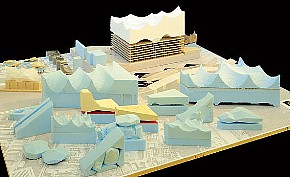
...and OMA...
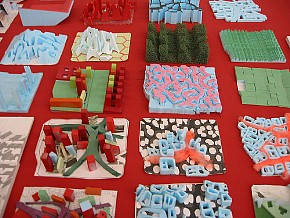
...I'm reminded of the many study models produced by Gehry for the Lewis Residence...
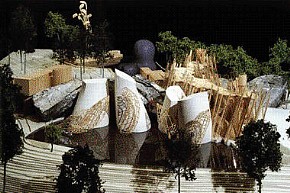
I may be stretching it, but...)
Gehry's method of design via innumerable study models [ie, experimentation] seems to have become quite influential.
[The following is an experiment. In the two passages below, the word experimental replaces the original word pliant, and the word experimentation replaces the original word pliancy.]
2008.08.23 21:06
peter's canon
Personally, I like seeing all the study models of various projects by various architects. I like it because it clearly demonstrates just how experimental architectural designing can be. And I seriously consider the notion that it may well be Gehry that best introduced architectonic experimentation to the profession.
Is architectonic experimentation in somewhat sharp contrast to Eisenman's method? Up to a certain point (in time) I'd say yes. And when Eisenman's work started exhibiting some measure of experimentation, that's where I start to see Gehry's influence.
| |
2014.01.02 20:04
1 January
...I agree that both "an operative utilization of architectural history as well as socio-cultural one" is present within the respective Koolhaas/OMA and Schumacher/ZHA 'projects'. Like I said in the beginning, I agree with your original answers, and I subsequently (oddly just I woke up this morning) came to realize how it was the "operative utilization of architectural history" that was missing. Anyway, between our last two posts the architectural and socio-cultural are now comfortably combined.
As a consequence of all of the above thread, I'm much more concerned/interested in how practice utilizes the architectural history/historiography. The type of architectural historian that Tafuri was against seems to no longer exist, and I'm not really sure who the correct (per Tafuri) architectural historians might even be today. The real 'operating' (historiography and practice) of today seems to be in the hands of architects themselves. (And whatever uncertainty I may still have is whether this assertion is true, and whether Tafuri ever anticipated such a development, but that's minor at this point).
Regarding Gehry, like you're now seeing the Seattle Library as critical regionalism (which sounds quite fine to me), I'm now interested in searching out "an operative utilization of architectural history" in his work. Gehry's early work does indeed comprise critical regionalism. And there's something about the initial designs (early 1990s) of the Disney Concert Hall's swooping forms/shapes first being conceived as stone that (I think perhaps) offers a key to the evolutionary unraveling of Gehry's operative utilization of architectural history. (These are very preliminary thoughts, and definitely nothing concrete).
2014.04.07 18:00
Panel rejects design for Eisenhower Memorial
Susan Eisenhower's June 20, 2013 statement, "Lastly he [Dwight D. Eisenhower Memorial Commission Chairman Rocco Siciliano] repeated again that my brother, David, had voted for the Gehry design, when in fact David supported the concept of another architect." really is provocative, and perhaps even ambiguous. It could mean that at the time when different architect's designs were being voted on that David did not vote for Gehry's design, but after Gehry's design was chosen, he then went along with the Commission's decision. In any case, I don't think that Susan is all out telling an untruth.
I find this also provocative: "Mr. Gehry told my sister and me last year that the metal scrims are a non-negotiable part of the memorial design – the element that makes this a Gehry." Did Susan and her sister then think, "What does he think this is then, a Gehry Memorial?"
If Gehry really said that, then that's what is most likely this Memorial's biggest design mistake.
2014.09.11 09:45
First SketchUp, now Gehry Technologies - Trimble makes another big acquisition
...wondering whether Trimble saw Gehry Technologies as competition or as something they were incapable of doing themselves. I imagine Gehry Technologies is altogether something unique, uniquely specialized and uniquely relevant within the industry that it couldn't help but be desirable.
| |
2014.09.12 12:49
First SketchUp, now Gehry Technologies - Trimble makes another big acquisition
Again, I very much doubt Trimble's acquisition of Gehry Technologies is simply a matter of 'branding for marketing purposes.' Gehry Technologies (which is different from Gehry Partners, LLP) offers a whole lot more uniqueness to the industry than merely the Gehry name. It's a substantive product that is indeed relevant.
2014.09.22 11:39
Eisenhower Memorial to consider plan that removes most of Frank Gehry’s designs
Here's the irony of your "connect with" argument, Thayer-D.
Gerhy's design is all about getting the public to connect with Eisenhower. The large screens are there to set apart a place within Washington DC that is all about Eisenhower and thus a place where the public can connect with Eisenhower while not being distracted by the surroundings.
Your criticism is that this is all about the public connecting with a design that they're (supposedly) comfortable with; connecting with Eisenhower is hardly even an issue.
2014.09.25 13:50
Eisenhower Memorial to consider plan that removes most of Frank Gehry’s designs
The notion that one "system of aesthetic ideas and ideals" is better capable of increasing human happiness than another "system of aesthetic ideas and ideals" already seems to be an ideology, and a strange and even potentially dangerous ideology at that.
Also, how does one even judge levels of happiness in such cases?
What are you going to do, put up a picture of the Paris Opera House against a picture of the Disney Concert Hall and ask people which makes for more human happiness?
| |
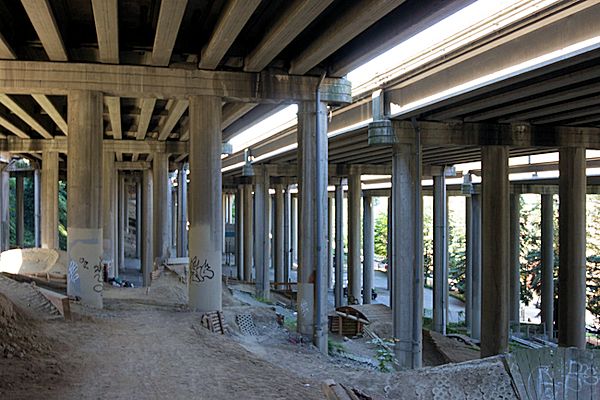
2014.10.04 12:45
I-5 Colonnade Park
Wonder how the columns of 1-5 Colonnade Park compare to the pylons of Gehry's Eisenhower Memorial for Washington DC.
Also note how similar I-5 Colonnade Park is to the socle of OMA's Agadir Hotel and Convention Center (Agadir, Marruecos, design 1990).
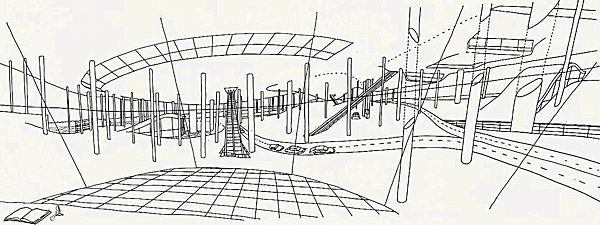 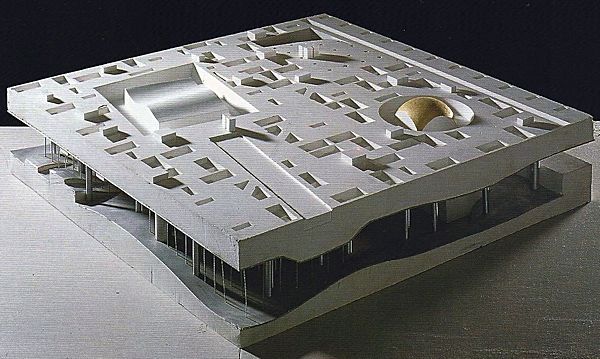 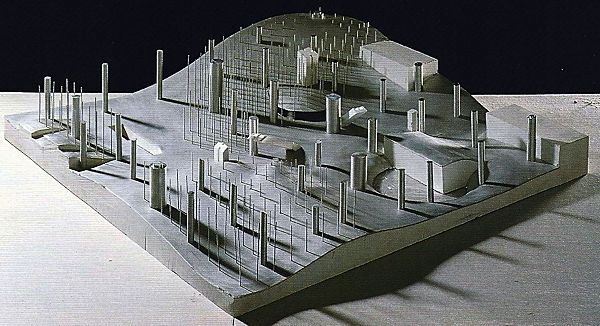
"The landscape which is generated with its concave and convex domes, with the "forest" of columns, its shafts of light, is a modern interpretation of Islamic space--Islam after Einstein relativity--which will also be expressed by materials: polished concrete, mosaic, tiles, etc."
So, is I-5 Colonnade Park also a modern interpretation of Islamic space?
|